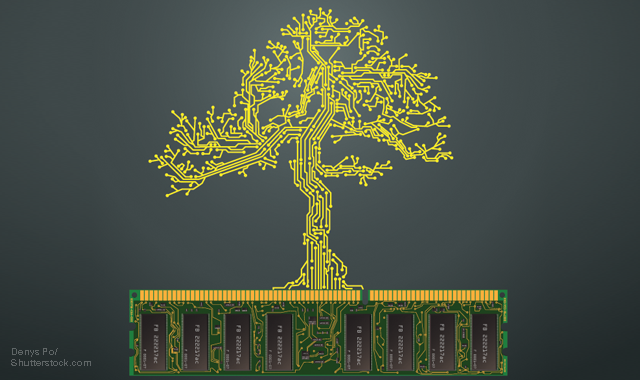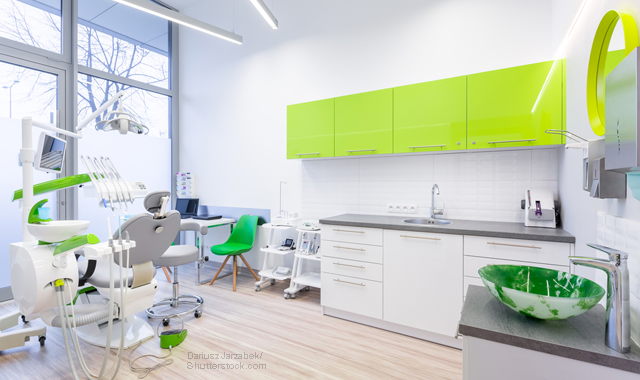4 ways to make your office more green — and more profitable
Being environmentally friendly doesn’t necessarily mean losing money, sometimes it actually helps you be more profitable.
Going green isn’t anything new. You’ve definitely heard about, have maybe even thought about how you can make your dental practice more green, maybe even done it.
Earth day is right around the corner (April 22), which means that now is a good time to reevaluate just what going green could mean for your practice, and how you can do it.

For many, however, the anticipated costs and problems associated with making their offices more environmentally friendly are just too much. Won’t installing all of these energy-saving devices cost a lot of money? Won’t my patients and employees be annoyed with low-flow toilets? Disposable plastic tools are way more convenient than reusable ones!
All of these are valid concerns, and no one should pretend that going green isn’t going to take some extra work. But if you’re committed to lowering your environmental footprint, it’s worth it. And if that doesn’t convince you, maybe this will: Going green can also save you a lot of, well, green.
These four tips show that, while it might take some extra work or some time to get used to, making your office more environmentally friendly might just be the best thing you can do for the earth and for your practice’s budget.
Up next: How to save $8,769 a year


1. Let’s get digital
We’ve talked a lot about the benefits of transitioning to a paperless office, and have told you how real-world dentists have gotten there. And while it’s tough, most practitioners feel that in the end the results speak for themselves.
If you haven’t gone paperless, think about the amount of paper that flows through your office every day. The small sticky notes, the ever-growing patient files, the printed X-rays, the memos, the patient sign-in sheets, the advertising brochures you hand out at your front desk. All of these costs are small per unit, but they start to add up over time. That’s not to mention the huge footprint that much paper leaves, and the amount of ink and chemicals involved in printing X-rays is expensive and environmentally damaging.
What about recycling you ask? Isn’t that good enough? Certainly, recycling is a good thing, and no matter how digital you get, you’ll still be using some amount of paper. But that doesn’t change the fact that only about 10 percent of paper is recycled, and even of that 10 percent a fair amount of it is made up of virgin paper.
Related article: How I managed to create a paperless office
All that paper really starts to add up in the environment. One ton (2000 pounds) of paper requires 24 trees to make, or in other terms, one tree creates 8,333 sheets of standard copier paper. That sounds like a lot, but think about your file room. How many thousands of sheets of paper have gathered in there over the years?
X-rays are a whole different story. When you go digital, you eliminate the need for all of the various chemicals - like heavy concentrations of silver or hydroquinone, both of which are toxic - and the detrimental impacts they can have on the environment. Plus, you avoid the hassle of having to dispose of old X-rays and their related materials.
What about the expense of going digital? Of course costs and timing will vary, but according to some estimates, it only takes 10.8 months to recoup the cost of switching to digital X-rays, billing and charting because of the cost savings. After that? Each year you could see savings of $8769. Your staff will spend less time organizing a mountain of paperwork, and you’ll be free to see more patients instead of chasing down that one file.
While just shy of $9000 isn’t necessarily going to save your practice, it’s nothing to sneeze at. And if makes your practice more environmentally friendly, then why not go for it?



2. Make your building happy
A lot of focus on environmental issues deals with areas such as air or water quality. But an important part of the environment is people. Just as reducing waste can make for healthier soil or air, it can also make for healthier people.
Have you heard of sick building syndrome? It’s an increasingly common phenomenon where office workers report feeling ill just from being in an office building. Symptoms include everything from headache, dizziness and nausea to personality changes.
No one knows the exact cause, but several culprits are suspected. Chemical contaminants, like motor vehicle exhaust coming through ventilation shafts or from sources like adhesives or upholstery could be one cause; other sources could include bacteria trapped in air conditioning or in pipes or just poor ventilation.
Related article: 5 signs your real estate agent isn't good enough
Beyond these physical sources, psychological factors may play a factor. A high-stress office can be a problem. Poor communication and a bad working environment can affect the health of your employees. But there’s also the problem of bad lighting, poor ergonomics and humidity.
A fair number of these problems can be solved by improving the health of the building. Put in more ventilation. Improve your seating for those who stay seated, and brush up on ergonomics tips for employees who are on their feet or who work with patients.
If this sounds like a lot of work (and a lot of expense), know that it’s all worth it in the end. Consider this study on the effect of green buildings and productivity, showing that Energy Star-labeled buildings tend to be healthier buildings, which create healthier and happier employees. Once you take into account the amount of sick time and the general lack of productivity in a bad building, the economics start to make sense. In real dollar amounts, the study estimates that owner-occupants can count on over $100 per square foot of building in extra value.
Additional research shows that emphasizing environmental friendliness can actual make people happier. Why wouldn’t you do something that leads to happier employees? Consider your marketing efforts - tell your patients that you’re doing everything you can to create a healthy environment. If it works for your employees, why wouldn’t it work for them?



3. Stop creating convenience trash
Think about the sheer number of disposable, one-use-only items in your office. Everything from disposable air/water syringe tips to bibs to towels to sponges to tray covers to needles to the paper cups next to the water cooler in your lobby - all of that really starts to add up in landfills.
A large part of that waste isn’t disposed of properly, allowing for dangerous chemicals or biohazardous materials to leak into the ground or water supply. Since 1996, the medical community has known that the incineration of used medical supplies leads to carcinogenic dioxins being released, and while improvements have been made through monitoring, the process isn’t perfect.
Dangerous chemicals aside, dental offices still produce large amounts of trash, especially from disposable plastic and paper products. Consider making the switch to reusable items wherever possible. Switch items like chair barriers or towels to cloth towels. Replacing disposable items with cloth ones can save you $2337 a year, since you’re not constantly paying to replace disposable items. It’s a quick turnaround too - it takes just 4.9 months to realize savings after investing in cloth items and a washer/dryer unit.
Consider giving your staff reusable cups, it’s an easy $178 saved a year. Still using plastic suction tips? Invest in some reusable metal ones and save your practice an easy $170 every year. Little changes like these really add up, keeping landfills empty, the air and water clean from dangerous chemicals.



4. Put on a light show
This one is obvious, but there’s a lot that goes into it. The electricity in your lightbulbs probably isn’t even close to one of your highest expenses, but this is again a case where doing a little can add up to a lot.
The obvious answer is to upgrade your building with newer, more energy-efficient bulbs. Everyone knows that, and it’s not hard (or very expensive) to do. But what about less obvious solutions?
For instance, think about places in your office where lights are on all the time for no good reason. Why do the bathroom lights need to stay on when no one is in there? What about the operatory not currently in use - does that need to stay lit? What about other offices, is it vital that those are on? What about the break room?
A simple fix like investing in motion-sensors or timers can help with those areas. If it’s not in use, make sure you’re not paying to light it up! This can save up to $600 a year, just from one simple fix.
Related article: 3 ways to manage your second-highest expense
You can apply this same strategy to other parts of your office. Do you have an old refrigerator sitting in your breakroom? Swap it out for something more economical. Turn off your computers when not in use. Are you still using old, less-efficient dental equipment? Consider upgrading to something newer - at the very least, you’ll be giving your office an upgrade it deserves.
And here’s another radical idea, but one that might be harder to implement. You probably do most of your work during the day, so why aren’t you using the constant free source of light in the sky? If you’re looking for a new office, think about lighting that office.
Consider adding a skylight, or more windows to let in as much natural light as possible. The more you can reduce the amount of light that comes out of your bank account, the better. And to top it all off, natural light will always look better than artificial light, and it will make your practice stand out from your competition. Do you want to be the practice where your patients feel they’re stuffed in a closet, or do you want them talking to their friends and family about how open and inviting it feels?
